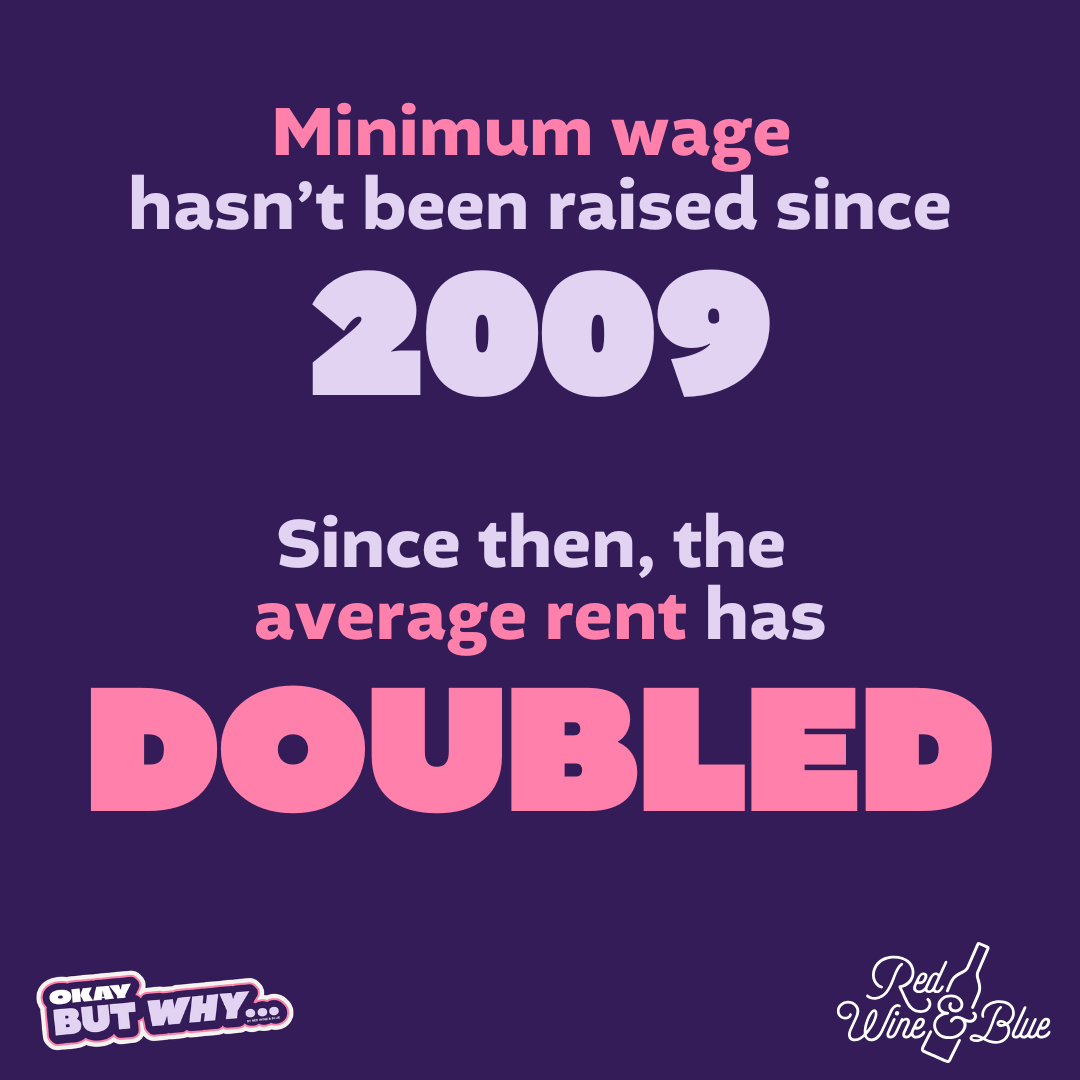
Okay, But Why Is Minimum Wage So Low?
The U.S. minimum wage is $7.25 per hour. That’s $15,060 per year if you work full time, which is just $20 over the poverty line. Who can survive on that? Thirty states have their own minimum wage that’s higher than $7.25, but in Georgia and Wyoming, the state minimum wage is actually less than that — only $5.15 per hour. Let’s take a look at the history of minimum wage, exactly who is making it, and dispel some misinformation.
In 2023, about 869,000 hourly workers in the United States made minimum wage or less. That’s almost a million workers trying to survive on $7 an hour. Most of us know from experience that it is not enough to pay rent and buy food, let alone raise a family.
Contrary to popular opinion, people on minimum wage are not all teenagers. In reality, teens make up only about ten percent of workers making minimum wage or less.
The reality is that two-thirds of minimum wage workers are actually women, most of whom are women of color. They’re working jobs like retail, food service, and home healthcare workers.
“I relied on government assistance to survive. Childcare grants, food stamps, Medicaid, utility assistance, even gas vouchers were absolutely vital and made it possible to use my limited income on rent. Because the rent always eats first. There were days in the month before the food stamp money was replenished that I went to bed hungry or ate very little. After paying bills, I often had no more than $20 left for the month. No matter how hard I worked, it never felt like it was enough. Or even that I was enough. This is the reality for millions of workers in America struggling to survive on minimum wage.”

A History of Minimum Wage in America
President Franklin Delano Roosevelt introduced the minimum wage in America. In the wake of the Great Depression, he tried to pass laws for worker protections and higher wages, but the conservative Supreme Court pushed back. It wasn’t until the Fair Labor Act of 1938 that the U.S. set a federal minimum wage of 25 cents per hour.
The minimum wage doesn’t automatically increase with inflation. It has to be intentionally raised by Congress, which hasn’t happened since 2009! The average rent has doubled since then, not to mention how expensive groceries, gas, and childcare have gotten. If the minimum wage had kept up with inflation, it would be $12 today.
The Economic Impact of Wages
Happy employees are more productive and less likely to quit, which is good for business. Plus, when workers are paid more, they can spend more – which also benefits American businesses and the economy. But would raising the minimum wage hurt businesses? Honestly, it’s really complicated and you can find economists and real world examples arguing both sides.
Either way, we have to do something. The United States has one of the worst wealth inequalities in the world and it’s only been getting worse since the pandemic. And it is really hard to pull yourself out of poverty. Renters pay more and can’t build wealth through home-ownership, and most people don’t have the money to buy a house. People with low credit scores face higher interest rates and fees. Poor neighborhoods often don’t have grocery stores, which means people end up paying more money for unhealthier food. If you put off seeing a doctor or dentist because you can’t afford it, you end up paying more when you’re forced to deal with an emergency. All of this combined makes it really hard to save money, climb out of poverty, and gain wealth.

So What Can We Do?
Wealth inequality has never been this bad, but it doesn’t have to be this way. Learn more from Momonomics about the economic issues affecting regular Americans — especially women.
